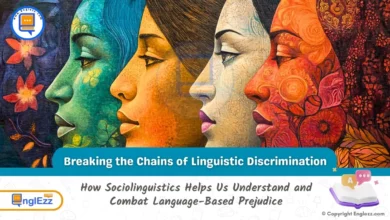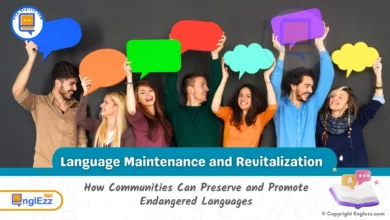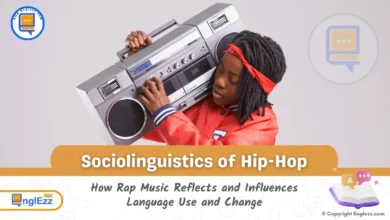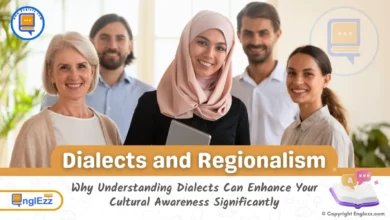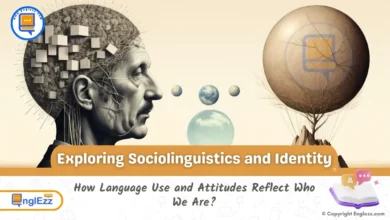Sociolinguistics
Welcome to our Sociolinguistics category, where language meets society in a rich tapestry of research, comparison, and discourse. Our blog is dedicated to the intricate study of language teaching and learning, focusing particularly on English, Arabic, and French—the cornerstones of global communication.
Within these virtual pages, you’ll find a curated collection of research studies, comparative analyses, and insightful blog posts meticulously crafted to illuminate the multifaceted dynamics of language acquisition and usage. Drawing upon the tenets of sociolinguistics, we explore the interplay between language and society, delving into the complex web of cultural, historical, and social factors that shape linguistic behavior.
Through rigorous academic inquiry and a commitment to intellectual rigor, we endeavor to unravel the intricacies of language pedagogy and practice, offering invaluable insights to educators, learners, and language enthusiasts alike. Whether you’re interested in the nuances of bilingual education, the impact of globalization on language diversity, or the role of technology in language learning, our Sociolinguistics category provides a scholarly sanctuary for discourse and discovery.
Join us on a journey of linguistic exploration as we navigate the rich terrain of sociolinguistics, where language transcends mere words to become a vibrant reflection of human experience and interaction. Welcome to a world where every syllable tells a story, and every dialect holds a key to understanding the intricate mosaic of our global community.
-

Sociolinguistics and Technology: How Social Media and Online Communication Affect Language Use and Change
In an age where communication is instantaneous and global, the evolution of language is witnessing an unprecedented transformation, largely driven by the rise of social media. Welcome to “The Digital Tongue,” a captivating exploration of how platforms like Twitter, Instagram,…
-

Bridging Cultures Through Words: The Impact of Accurate Translation in a Globalized World
In a world where diversity intertwines with interconnectedness, the art of accurate translation emerges as a beacon of cultural harmony. Beyond mere linguistic conversion, precise translations wield the power to bridge deep-rooted differences and foster genuine understanding across boundaries. As…
-

Breaking the Chains of Linguistic Discrimination: Exploring the History and Impact on Society
Language is a fundamental aspect of human communication and identity. However, it has also been a source of division and discrimination throughout history. Linguistic discrimination, also known as language-based discrimination, is the unfair treatment of individuals based on their language…
-

Language and Gender: How Sociolinguistics Explores Differences in Communication between Men and Women
It’s no secret that men and women communicate differently. We often hear about it in pop culture, and we may even experience it in our own personal relationships. But have you ever stopped to think about why this is? In…
-

Language Maintenance and Revitalization: How Communities Can Preserve and Promote Endangered Languages
Language preservation and revitalization are essential to maintaining the rich tapestry of human culture and history. Sociolinguistics, the study of the relationship between language and society, plays a crucial role in understanding and addressing the challenges faced by endangered languages.…
-

The Evolution of Slang: How Language Changes Over Time
Slang is an ever-evolving language phenomenon that reflects the social and cultural changes of each generation. From the cool vibes of the 60s to the lit culture of the 21st century, slang has come a long way. It’s a way…
-

Fostering Language Diversity and Equity: How Schools Can Shape Language Policy in Education
Language diversity and equity are important issues in education today. With so many different languages spoken in schools around the world, it’s vital that we have policies and practices that promote language diversity and equity. Schools play a significant role…
-

Rhyme, Rhythm, and Revolution: The Sociolinguistics of Hip-Hop
Hip-hop is more than just a genre of music; it’s a cultural movement that has taken the world by storm. A key element that sets hip-hop apart from other music genres is its unique style of delivery. From the rhythm…
-

Dialects and Regionalism: How Language Variation Reflects Cultural and Social Differences
Language is more than just a tool for communication; it is a reflection of who we are. Our dialects – those unique variations in speech influenced by geography, culture, and social context – serve as vital markers of identity. When…
-

Sociolinguistics and Identity: How Language Use and Attitudes Reflect Who We Are
Language is an essential part of our identity. The way we speak, the words we use, and the tone we convey all contribute to how others perceive us. Sociolinguistics is the study of how language and society interact. It explores…
- 1
- 2



